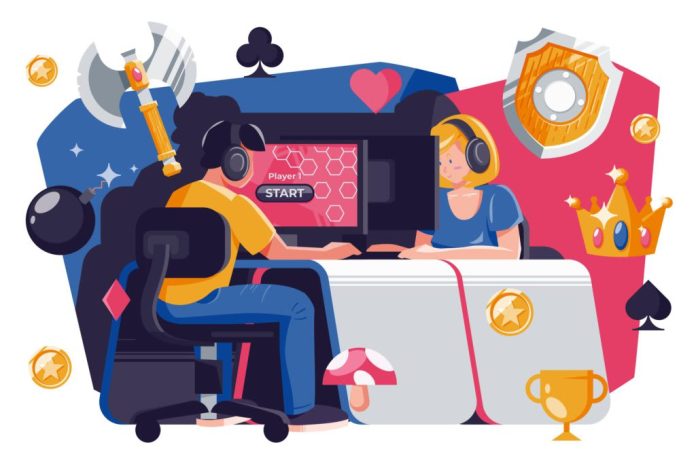Across India, Pakistan, Bangladesh, Sri Lanka, and Nepal, games like Teen Patti, Carrom, Ludo, Kho Kho and local tag games are woven into everyday life. These aren’t merely leisure activities—they’re a shared heritage rooted in festivals, family bonding, and intergenerational memory. As digital platforms flourish, preserving these games online connects more than just players—it links cultural identity with modern outputs.
From Courtyards to Smartphones – A Historical Perspective
Teen Patti (a three-card Indian poker variant), Carrom and Ludo trace their roots to community play in villages and neighborhood squares. Colonial influence introduced twists, and regional festivals further shaped versions of Kho Kho, Kabaddi and marbles. These games evolved over generations, carrying sociocultural values like teamwork, strategy, patience and trust.
The Shift to Digital – What’s Driving the Change?
South Asia’s mobile gaming market is expanding rapidly. In 2023 it was valued at roughly USD 5 billion and growing at 15 percent annually, with India alone supporting around 450 million gamers. Globally, mobile gaming hit USD 139 billion in 2024 and is projected to grow beyond USD 256 billion by 2030. Affordable smartphones, broader internet access, and young audiences’ appetite for nostalgic yet social gaming drive this change. During the pandemic, online versions of Ludo and Teen Patti surged in popularity as virtual replacements for real-world interaction.
Case Studies of Iconic Digital Adaptations
Ludo King achieved over 1 billion downloads by early 2024, making it the first Indian game to reach that milestone. In India alone, millions play daily; it succeeded by offering local languages and simple social gameplay.
Teen Patti digital apps maintain the familiar mechanics while supporting online multiplayer, tournaments, and secure transactions—bringing a centuries-old card game into the smartphone era. For developers interested in understanding the process and technology behind building Teen Patti apps for modern audiences, this detailed guide on Teen Patti game development offers a complete overview.
E-Kho Kho and digital kabaddi formats are emerging under organized e-sports initiatives—turning grassroots athletic traditions into structured competitions.
The Mechanics of Digital Transformation
Developers focus on cultural authenticity. Local-language UI (Hindi, Bengali, Tamil, Urdu) ensures familiarity. Narrative elements—like regional festivals, folk motifs and classic soundtracks—enhance nostalgia. Multiplayer features and leaderboards foster competition, while AR overlays and avatars modernize play without diluting tradition. Monetization balances ads, micro-transactions, and tournament fees with transparency and trust.
Cultural Preservation Through Technology
Some developers collaborate with historians and cultural institutions to ensure gameplay reflects authentic rules and stories. School-level NGOs and government programs such as Bharatiya Khel are incorporating digital versions of traditional games—making preservation part of education under India’s NEP 2020. The challenge is calibrating gameplay for authenticity while making it appealing to global audiences.
The Business & Market Opportunity
India dominates the regional mobile-gaming market, with about 450 million players. Small studios grounded in local culture can reach diaspora communities across South Asia—and beyond. Indie developers with culturally respectful designs may compete effectively against large international publishers. Emerging rural markets, especially via Android devices, offer untapped potential.
Roadblocks and Challenges
Connectivity and device fragmentation remain concerns in rural areas—overcoming infrastructure constraints is essential. Real-money gaming, especially for card games like Teen Patti, faces regulatory scrutiny and cultural sensitivity. Global adaptation risks cultural appropriation unless local voices are involved in development and narrative.
The Next Decade – Future Trends to Watch
Developers are experimenting with AR/VR versions of folk games—imagine Carrom played virtually in a community setting. Esports leagues for Kho Kho and Kabaddi are emerging in schools and rural tournaments. Blockchain and NFTs are being explored to represent collectible cultural artifacts: digital tokens for game boards, rulesets or heritage stories.
Conclusion – Merging Heritage and Innovation
Digitizing traditional games preserves cultural memory while engaging new audiences. The path—from courtyard to mobile screen—is not just a trend, but a meaningful alliance between tradition and innovation. Developers, cultural institutions, educators and players all have a stake in this journey. It’s time to embrace platforms that honor these games’ origins and amplify their reach through technology.
